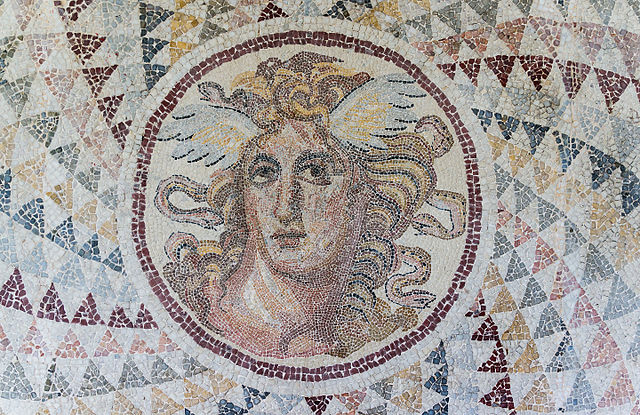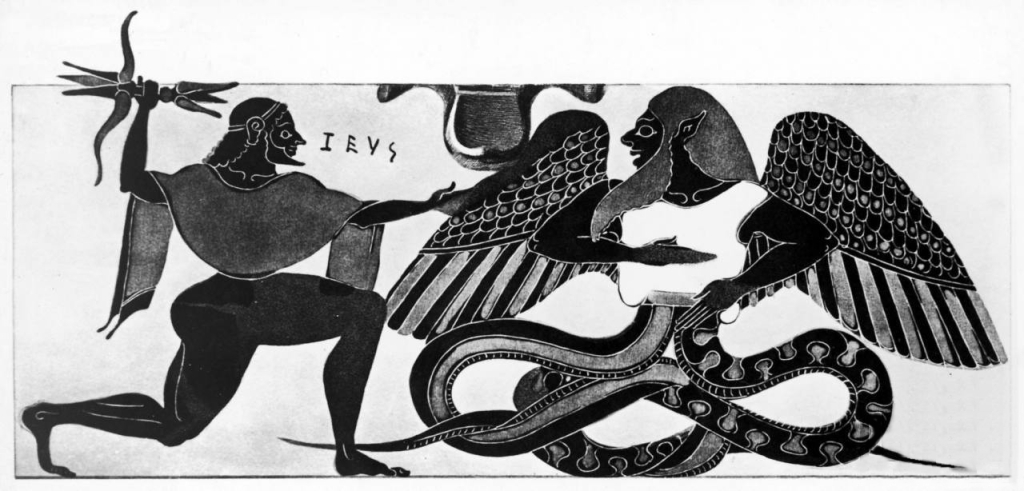In October, Peopling the Past brings you interviews and reflections from scholars whose work investigates monsters and demons in the ancient world, examining their meaning and symbolism and their deeper connections to human experiences past and present.
What fascinates you about ancient monsters in myth?
It all depends on the monster (or sometimes, “monster”). I find the more traditionally monstrous beings of Greek myth (Typhon, Echidna, the Chimera, etc.) to be fascinating for the sheer creativity that would have gone into their creation. Who decided that any creature could have quite so many snake appendages as Typhon? How can the Chimera make a goat’s head seem horrifying? It isn’t as simple as them being “created” in the traditional sense, but still people had to think up these creatures in one way or another and that alone captures my imagination. As for certain other “monsters”, see my answer to the next question.

Who is the most misunderstood monster, demon, or other mythical being, in your opinion?
Medusa is, hands down, the most misunderstood mythical being when it comes to modern understanding and interpretations. Today she is often understood to be a dangerous, murderous creature surrounded by the fruits of her stoney-gaze labour but historically Medusa is much more complex. The majority of surviving textual evidence provides little to no description of “monstrosity” and even less detail on anyone she may have harmed while her head was still on her body. Ultimately, in the ancient Greek sources, Medusa was just the unfortunate victim of a king’s whims.
What kinds of ideas, fears, or relationships to animals/nature do you think are behind the creation of monsters in ancient myth?
The natural relationship that stands out most to me after studying ancient Greece’s mythical monsters is, in a word, snakes. Based on the monsters alone the ancient Greek people appear to have had a complicated, and interesting, relationship with snakes. Typhon, in his many descriptions, includes snake appendages of all kinds… snakes for fingers, snakes growing from various human body parts, vipers growing from his thighs. It suggests to me that the ancient Greeks had a healthy fear of snakes while still recognizing a kind of supernatural divinity in them.


Why do you think ancient monsters are so fascinating for audiences today?
Just like the rest of Greek myth, monsters are timeless. The fear of something horrible and unexpected lurking in dark caves and forests is something everyone can identify with. Fortunately for us today, we can imagine the horrors of the ancient Greek world and not worry we might encounter the Chimera just beyond the trees; instead we can read the story of Bellerophon and Pegasus’s defeat of it and fully appreciate the wonder that is an enormous lion with a goat’s head and snake-tail, all three of which might breathe fire at any moment.
Which of the LTAMB episodes would you direct readers to in order to learn more about ancient monsters?
Let’s Talk About Myths, Baby! has covered monsters in so many different ways. The iconic (not-so-monstrous) Medusa is covered in a number of episodes; the monstrous duo Typhon and Echidna were featured on a very recent episode, among so many others over the years (I love monsters!). You can access all the podcast’s serpentine and spooky stories at mythsbaby.com/spookyseason

Liv Albert is the creator and host of the popular, chart-topping podcast Let’s Talk About Myths, Baby! where she retells Greek and Roman myths in intricate detail while focusing on marginalized voices of the time. Liv has a degree in English Literature and Classical Civilizations and loves all things ancient and nerdy. She is also the author of the bestselling book Greek Mythology: the Gods, Goddesses, and Heroes Handbook, and has a book of Greek myth themed cocktails (Nectar of the Gods!) slated for publication in Spring 2022. You can find her at mythsbaby.com, @mythsbaby on Instagram Twitter.

One thought on “Blog Post #37: Myths, Monsters, and “Serpentine Stories” with Liv Albert”